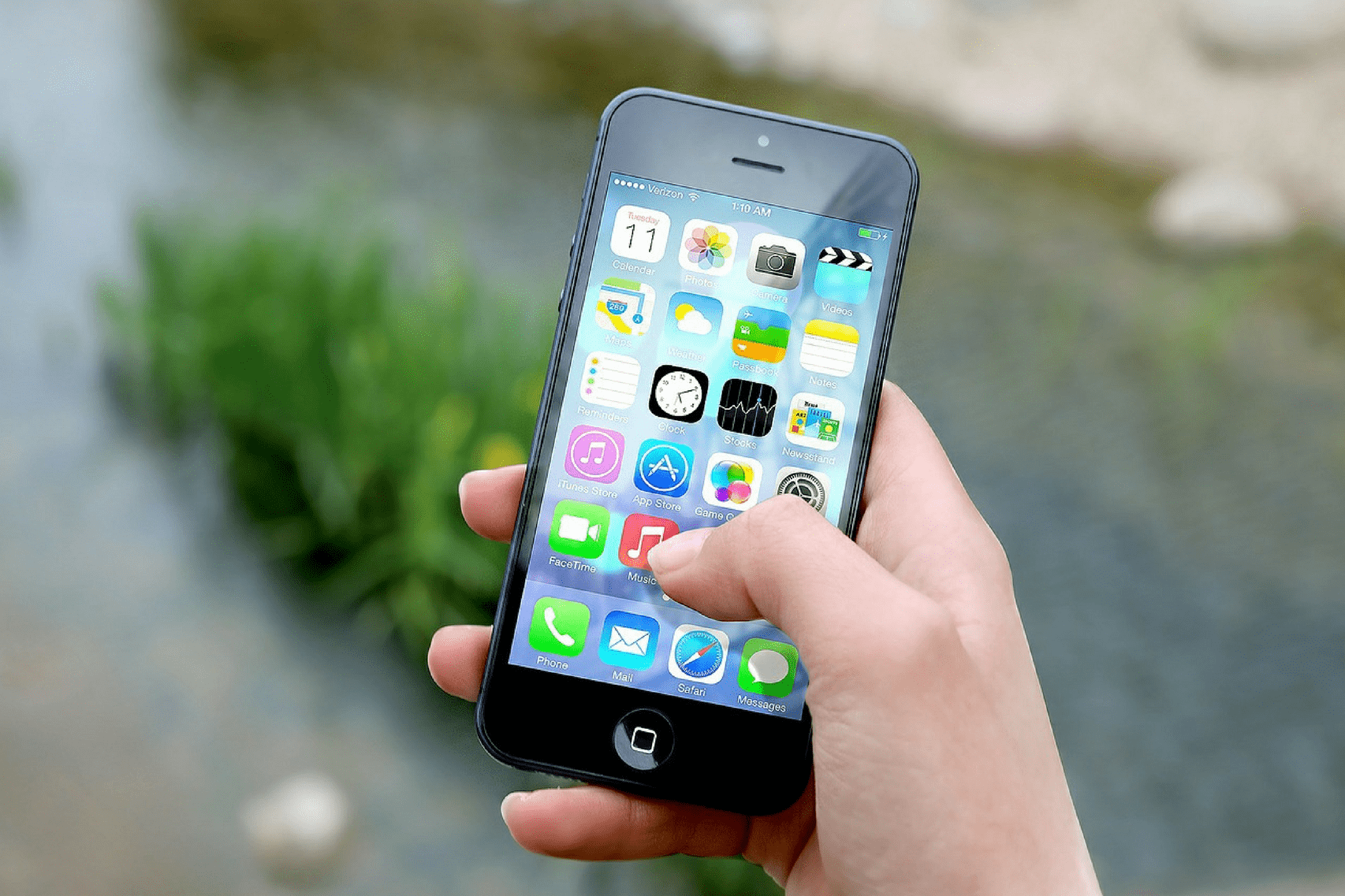Should you be paying for your own mobile data? Mobilink says no, and few mobile users would disagree with them. In our previous article, we made a case for why the future of mobile data is free. In this feature, we take a more in-depth look at what Mobilink offers that enables them to provide unlimited data and voice calls at no cost to users.
Mobile or Die: Holding the Future in the Palm of Your Hand
We used to joke about being addicted to our phones. Then we realized – often because our loved ones made us aware of the fact when they managed to look up long enough from their devices – that comedy wasn’t so far off from the truth. In the end, we simply plunged in and embraced it.
Mobile is here to stay. It might be replaced with better, more intuitive technology down the line, but for the foreseeable future, few of us will walk the plains of the earth without looking for charging stations and asking about Wi-Fi passwords. Our phones have become members of our family and extensions of ourselves.
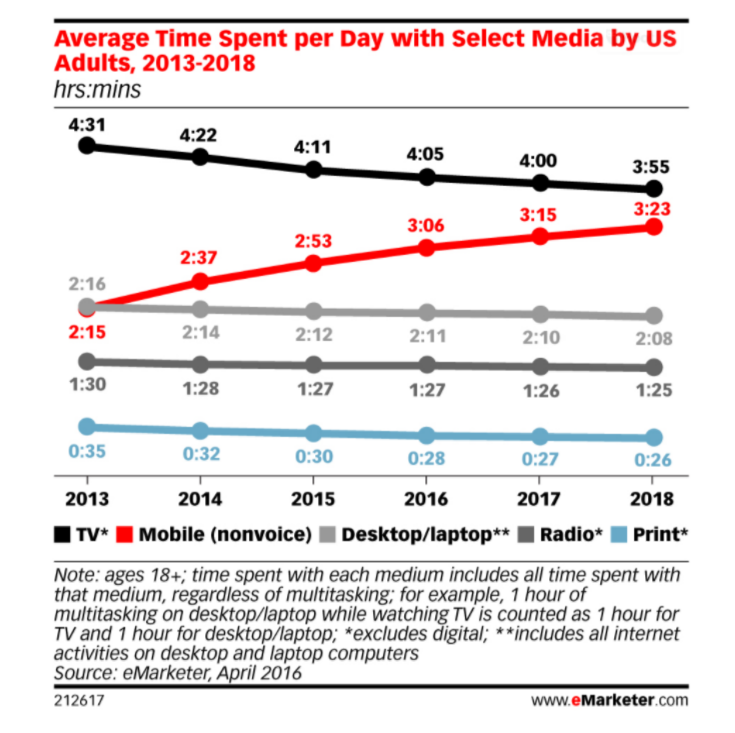
Once, we considered our phones products. Now, thanks to this unbridled union between us and these devices, we have become the product. And while we’re browsing away at our leisure, companies have quietly stepped in and made vast fortunes off our tapping thumbs. Something’s got to give.
The State of the Telecoms Industry
In 2017, the mobile industry’s contribution to global GDP was US$3.6 trillion. By 2022, this is expected to rise to an estimated US$4.6 trillion. Mobile operator revenue was a whopping $1.05 trillion in 2017, thanks to 5 billion unique subscribers (that’s at a 66 percent penetration rate, so expect more money to reach the pockets of the few as mobile adoption increases).
Who are these subscribers? We are. We’re the many making the few rich. Basic economics, right? Not in this day and age. Not when we the people have the power to take back what is ours. This is the blockchain promise and, in this particular case, the Mobilink solution. But let’s first consider the playing field.
No Stopping Mobile Ads
Mobile ads are here to stay. This is neither a lucky guess nor a crystal ball prediction. Judging by the numbers, advertisers have found their sweet spot in getting onto phones.
In mid-2017, mobile ads comprised a staggering 54 percent of total internet advertising revenues. Lest you skip over their significance, let me belabor that point: more than half of all money spent to capture your attention online is delivered to you through the supercomputer resting next to your pillow at night.
This could be a flaky statistic, moving up and down the ladder at the whim of the year at hand. Perhaps a 40 percent growth rate from the previous year’s US$15.5 billion expenditure was no more than a lucky leap. Consider, then, the following data:
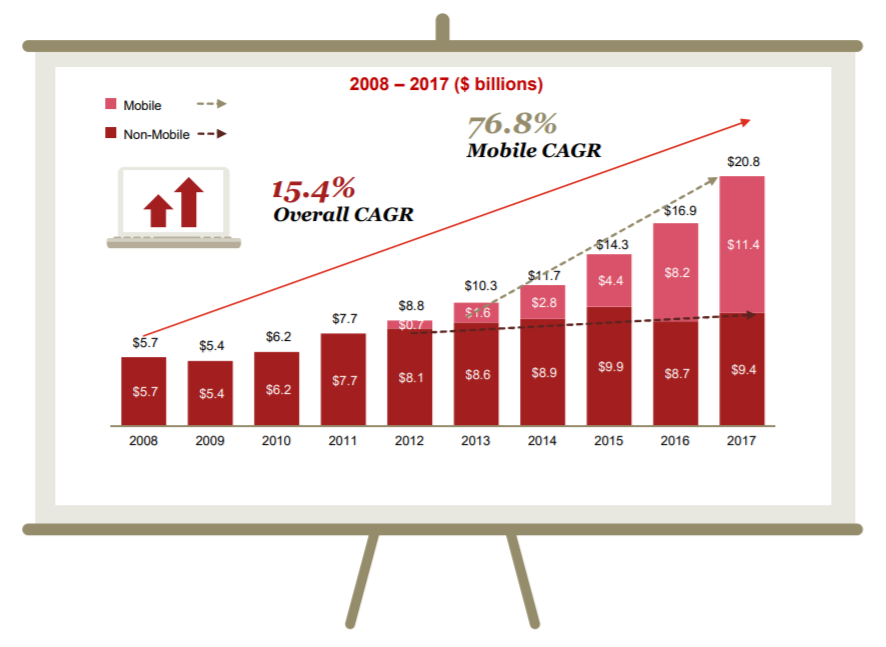
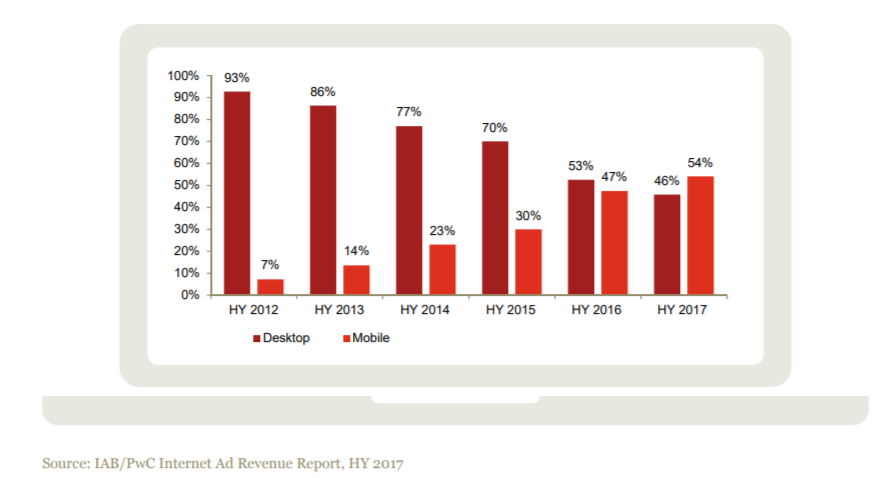
Desktop usage has fallen from prominence, while mobile usage has been steadily climbing from the get-go. If you consider how much of your desktop-based online activities now happen on your mobile, this is straightforward statistical proof for behavior you’re all too familiar with.
In fact, mobile advertising is popular across all formats, so you can expect to see more of it creeping up with each passing day.
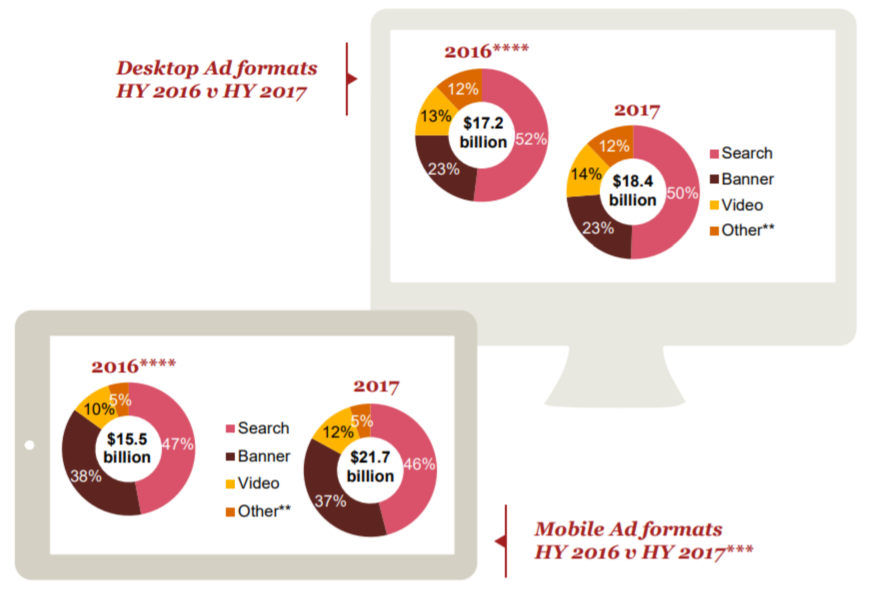
In The Future of Mobile Data is Free, we spoke about the rise of mobile video. Once again, number crunching shows that desktop video ad revenue is making way for mobile.
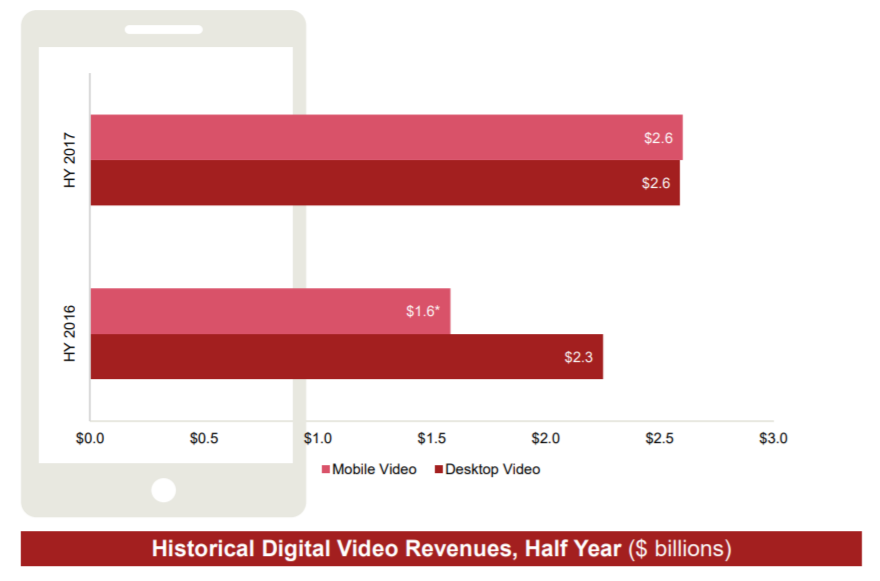
The question is, with all these ads being continuously shoved in your face, who benefits? It is estimated that 2019 will see 72 percent of US digital ad spend being mobile-based. And yet, 70 percent of us dislike the ads we are served (not that I need to tell you that).
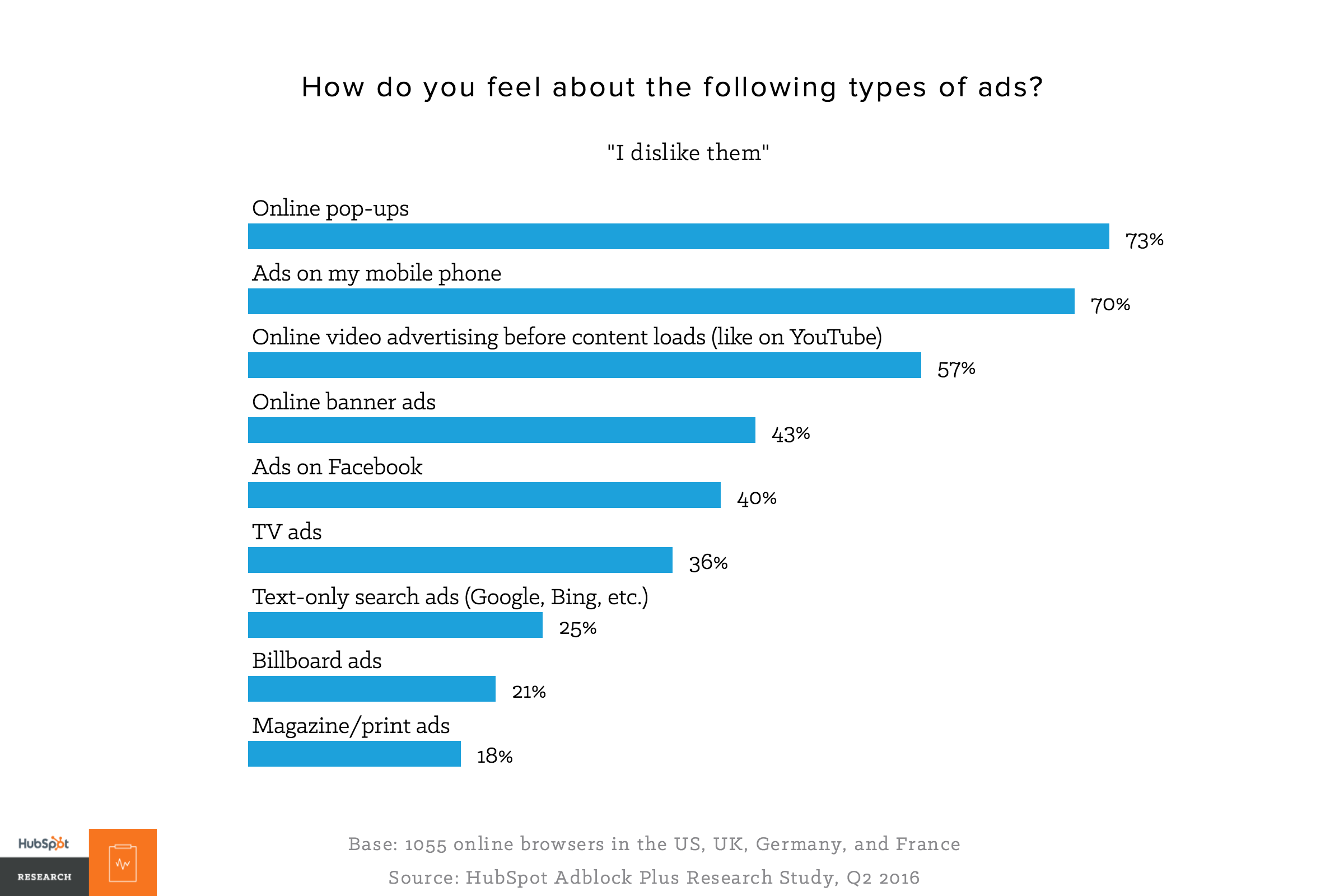
The Mobile Ads Monopoly
If we follow the money trail, however, we needn’t go far. While advertisers the world over are rushing to get themselves onto our screens, an estimated 84 percent of all digital advertising spend lands in the pockets of only two companies: Google and Facebook. The rise of the competition isn’t looking any better for independent publishers, for whom advertising is often a major source of income. Amazon is most likely to give the digital duopoly a run for their money.
The message is clear: for these digital powerhouses, you’re one of many numbers, and each one of you means money. Welcome to a world in which you’re the product being sold – sometimes quite literally – to the highest bidder.
Blockchain in the House
Blockchain has uses and applications as-yet-unimagined. And beyond blockchain, there will likely be a new technology to take us even further. In the current relay race, blockchain grabs the baton from the traditional industry models we’ve come to accept as “just how things are,” then heads straight for the disruption lane. It’s not trying to prove a point or be a thorn in anyone’s side. It simply says, “How about we do things this way?” And every industry out there is left equal parts amazed and disgusted at the power of blockchain to turn everything on its head.
The telecoms industry is no different, and neither is mobile advertising. Both need only the foresight of a select few individuals to recognize where blockchain can be called in to do what it does best: disrupt outdated models and systems.
Enter Mobilink.
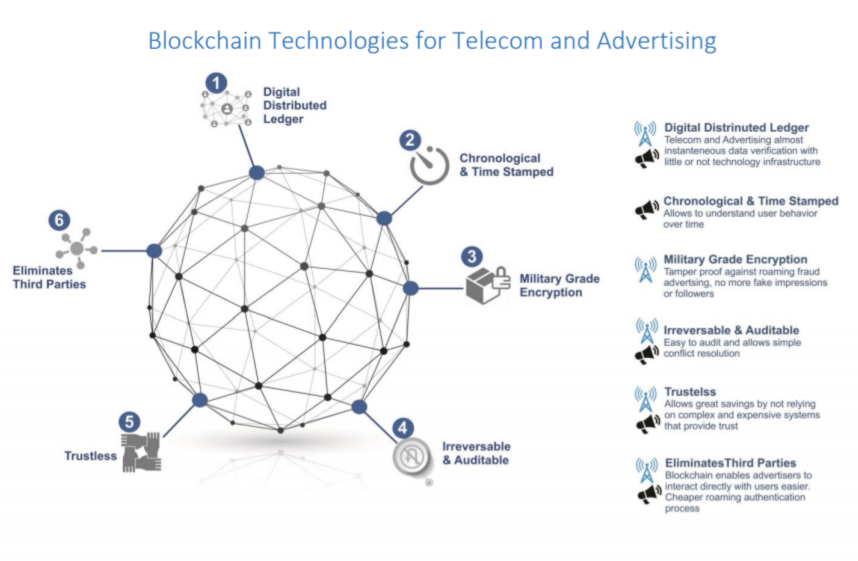
Welcome to Mobilink: The Future of Mobile Connectivity
For an introduction to Mobilink, read our first article on the company, The Future of Mobile Data is Free.
Thanks to the platform’s built-in blockchain tech, Mobilink will enable advertisers to send targeted ads to your smartphone. The ad revenue this generates will, in turn, pay for your voice and data services, in effect allowing you unlimited talktime and browsing, just the way it should be.
Mobilink is comprised of 2 business entities, both tasked with important jobs that will, together, shake up the telecoms and mobile advertising industries for good.
The Mobilink Network is based in Ontario, Canada. This entity is actively building out network and distribution channels globally to ensure that Mobilink SIM card holders enjoy coverage anywhere in the world (and with a current count of 170+ countries, they’re clearly succeeding in their quest). 1,200 clients are already in beta test mode, and a sales volume of over 2 million SIM cards over the next 6 months has been committed to by established distributors worldwide.
Mobilink Coin operates from Manila, Philippines, where they have created the soon-to-be-launched Mobilink ICO. This entity is responsible for managing and promoting the ICO, for marketing and token issuance post-ICO, and the development of the mobile application and advertising exchange platform.
Let’s dive into what Mobilink offers its end-users.
Mobilink Features
- Token holders receive a Mobilink SIM card compatible with any unlocked Android or iOS smartphone.
- Employing blockchain, users receive targeted ads on their mobiles.
- These ads, in turn, generate ad revenues that eliminate the need to pay for voice and data services, offering users unlimited free calls and mobile connectivity.
- Thanks to Mobilink’s global roaming contracts in more than 170+ countries, token holders who travel internationally will save on expensive data and voice roaming charges.
- The Mobilink platform’s blockchain technology and smart contracts functionality calculates a user’s daily ad revenue earnings and pays out Mobilink coins (MOBL) into their Mobilink wallets daily.
- MOBL tokens can be converted to other cryptocurrencies on public exchanges or via the Mobilink wallet app, or to fiat.
- The Mobilink MasterCard, linked to a user’s Mobilink wallet and Mobilink exchange, enables token holders to spend the ad revenue they earn on the Mobilink platform at a MasterCard-friendly shop anywhere on the planet or withdraw money from any MasterCard-accepting ATM.
An overview of the Mobilink ecosystem can be seen below:
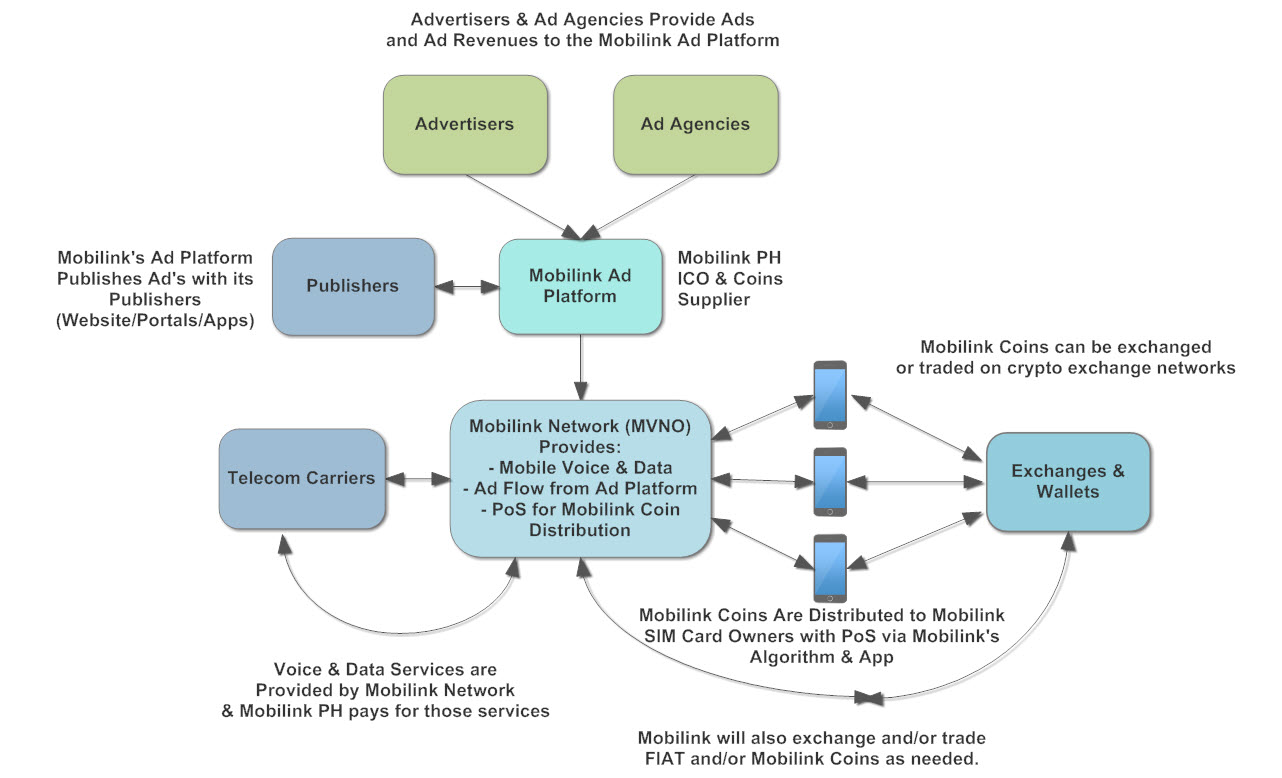
The Mobilink ICO
By participating in the Mobilink MOBL token sale, you will receive the following benefits:
- 1 SIM card for every US$300 invested
- Free voice calls and data services for the lifespan of the Mobilink network
- Earn MOBL tokens daily thanks to ads served on your Mobilink-linked mobile
- Exchange your tokens for other cryptocurrencies or fiat currencies
- Use your Mobilink MasterCard anywhere in the world
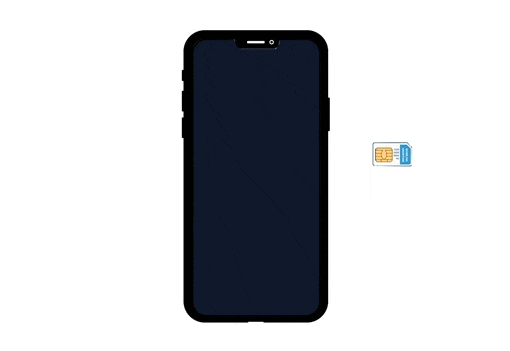
Mobilink’s ICO, which started on March 15, will run until April 15, 2018. A minimum contribution of US$300, payable in BTC, ETH, XRP, LTC, BCH, or DASH, will secure you 3,000 ERC-20 compatible MOBL tokens (valued at US$0.10 per token). The total token supply is 9 billion tokens, and the ICO has a soft cap of US$20 million and a hard cap of US$240 million.
For more information on how Mobilink wants to reward you for using your mobile devices, visit their website, read their white paper, and join their Telegram group.

